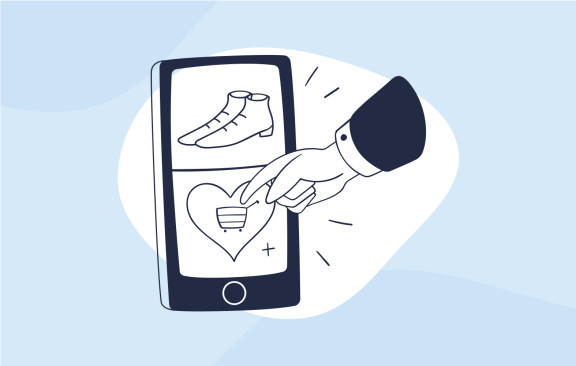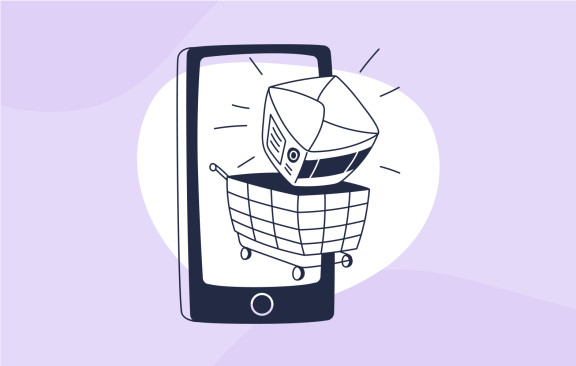Sourcing trending niche products is an excellent way to take your eCommerce business to new heights. However, not every niche product is quite the same no matter how unique or trendy it is. The trend analysis is crucial for each product.
The process of choosing products that truly sell involves a bit more than simply picking items that look good.
The good news is that you're about to find out exactly what you need. Below are 8 steps for sourcing trendy niche products that can make your eCommerce store prosper.
Step 1: Choosing a niche
If you are completely new to eCommerce, there’s one more step you should take before diving into sourcing trendy niche products. And that's choosing your niche.
Why Do You Need a Niche?
Most vendors sell two different kinds of products:
- commodity products, and
- niche products.
Commodity products are those that all consumers continuously need no matter what. These can be food, clothes, cosmetics, hygiene products, or anything that you'd find at your local supermarket.
The beauty of selling commodity products is that there's always demand for them.
Niche products, on the other hand, will target a smaller segment of people. A niche.
While commodity products are always in demand, people are generally not passionate about these everyday items. That's different with niche products. Because they target a more specific group of potential customers, these people tend to care more about them.
Think about it. What would you have more emotional attachment to? A loaf of bread or an iPhone? I'm rather sure you'd choose the iPhone. It's not just about the price but the story that you tell yourself about what it means to own an iPhone.
From a marketing point of view, serving a niche makes you stand out. It also makes it easier and even cheaper for you to target niche customers than generic ones.
How to Choose Your Niche?
It's best to go for an area that you’re personally passionate about and that has demand. This will ensure that you will be more enthusiastic and knowledgeable working with these products.
You'll also be able to serve your customers better because you'll connect with them on a much deeper level. You will be more effective at solving problems that arise as well.
Step 2: Choose products that will sell

You can be madly passionate about typewriters. But, nowadays, you aren't likely to make a living selling them.
You need to choose products that you know will sell. Because what use there is to have an amazing niche if you can't make enough sales, right?
There are two ways in which you can go about that.
The easier one is choosing products that already have demand. By choosing this approach, you'll be able to start selling sooner and will also see faster results. You can do so by:
- Using tools to identify trending products. Some examples include Instant Product Evaluator Tool, Trend Hunter, and Trend Watching.
- Researching trending products on Amazon, eBay, Etsy, and other e-commerce platforms.
- Searching for trending product reviews on YouTube, e.g., unboxing videos.
- Looking through trending niche product blogs
- Discovering what influencers in the niche are endorsing.
Create the Demand Yourself
The other option - that is also harder - is creating the demand yourself. According to Simon Sinek, a world-famous author, consultant, and motivational speaker, "people don't buy what you do, they buy why you do it."
Think of Apple. They created an expensive product when computers weren't even in high demand. Yet, they managed to acquire a cult following over time.
Not simply because of their features, but more so because of what they represented and stood for.
By choosing a strong enough reason or creating a powerful brand story, you'll make people want to follow you. And if they do, they'll be more likely to buy from you. This approach will require time and investment on your part though.
Online marketing knowledge or assistance from a professional in the area can make an immense difference, too. It'll help you to establish your brand voice and craft a message that will be able to attract your niche audience in the best way possible.
Ideally, you'd like to do both. Start by selling products that will surely sell and over time build the unique story of your brand.
That will ensure that your buyers won't just make one time purchases, but will stay with you long-term - because they resonate with your reason and brand story.
When entering a trendy niche market, evaluating the product life cycle is critical for sustained success. It allows businesses to capitalize on the peak demand phase while also being mindful of potential saturation or decline in popularity. By understanding the life cycle, entrepreneurs can time their market entry, adjust inventory levels, and innovate products or marketing strategies to stay ahead of the curve and maximize profits within the dynamic trends of the niche market. This strategic approach ensures that businesses can navigate the ups and downs of the product's lifecycle, optimizing their chances of long-term viability and profitability in the trendy niche.
Step 3: Choose products that solve a problem
Customers won't just buy a product. They'll buy it because they need it and because it solves a problem that they have. And if it’s trendy, that’s even better. There’s virtually myriad possibilities for problems out there, for instance:
- "My hair is terribly dry. I need a product to make it softer." Pitch them a brand new trendy organic conditioner with Argan oil in it.
- "I don't like how insecure I am. I want to be more like James Bond." Offer them a trendy watch like one that James Bond wears.
- "I have nothing trendy to wear." Pitch them trendy outfits from the latest fall collection
- "My phone is getting old and outdated." Offer them a newer and trendier version.
The list of the potential problems could go on forever. The most important thing here is to know that there is a problem as well as a demand for a solution. You are the one who has the solution to it.
And it is trendier, newer, more practical, cheaper, or otherwise better than that of your competitors. Really keep the trend analysis in mind with each of your competitors as well.
That being said, you must understand your potential buyers and their problems. Find their pain points and offer the best, trendiest, and highest quality solution to them.
Step 4: Choose products that people are passionate about

A lucrative area to tap into is selling products that appeal to people's hobbies and passions. People usually spend heavily on what they love. Choose a niche that appeals to people’s passions, and offer high-quality and trendy products, and you’re almost guaranteed to attract a loyal customer base over time.
As mentioned above, it's even better if you are passionate about this specific niche, too.
The best way nowadays to source trendy niche products is by observing influencers. Influencer collaboration marketing becoming one of the most effective marketing techniques. And large brands know that very well.
Check out the influencers in your niche and the products that they are endorsing. You'll discover what products are currently in demand and what trends are being set. And you'll learn what your potential target audience is interested it.
Step 5: Choose timeless products
There's nothing wrong in itself to sell seasonal products that may only be popular around Christmas, Thanksgiving, and other holidays. Yet, I advise you to have more timeless products that will be in demand all year long as your main products.
Clothes would be an exception here as their selection would change every season.
Add seasonal products to your online store as an extra to earn even more.
Step 6: Choose products that are hard to find

To buy commodity products, you'll probably go down the street to your local supermarket. Yet, if you're looking for something more unique such as a complete chemistry set, you're more likely to go online.
That's where you want to be if you're selling niche products. Since niche products target only a specific group of people, they are very unlikely to end up in local stores.
Choosing products that aren't easily available yet trendy and unique also means that you'll have little to no competition. At least at the beginning until your competition catches up. And they will. But, by then, you'll already establish yourself and have a steady and loyal customer base. Always keep a close eye on your trend analysis.
Step 7: Choose products that are disposable and consumable
Why do you need to sell something that won't last forever? Because you want to make more sales in the future. Returning customers are essential for your business to stay afloat in the long run.
Imagine that you write a book. People will buy it, but only once. Except for very rare cases, they won't keep buying copies of the very same book. Therefore, your income will be capped the moment everyone in your target group has one.
Now, imagine that you release a monthly magazine. That means that you'll be creating new value for your audience every single month. Which in turn means sales and income every single month.
Note though that I'm not telling you to sell lower quality products that buyers will need a replacement for. This won't be as lucrative because such products normally come at a cheaper price. And it'll build a bad reputation around your brand or even permanently damage it.
Step 8: Choose a trustworthy and reliable supplier

The last thing you want is to find your dream trendy niche product and then run into problems with its supplier. These can range from not having a steady flow of products to legal problems. That's why paying attention to the trend analysis is crucial for each product that you want to sell.
Imagine that you set up an online Star Wars merchandise store. You don't want to run into legal trouble because your dropshipping store was sending your customers bootleg lightsabers instead of licensed ones.
Even if the issues are not actually your fault, your buyers don't know that and likely won't care. They want their products, they want them fast, and they want them to be worth their money.
Any issues that they experience will be directed towards you. That can happen in the form of emails about issues, complaints, 1-star reviews, or negative word-of-mouth. Reviews are critical for any business to get even more customers. What is more, negative feedback spreads much faster than the positive feedback.
To avoid any of these issues from happening, make sure you look into your potential supplier before making any commitment.
Now, the ball is in your court.
Are you ready to start sourcing trendy niche products? What niche products are you planning to sell? What is your next step going to be? Feel free to let us know about how your niche eCommerce business is doing in the comment section below.










I wanted to reach out to you about your latest round up post “How To Source Trendy Niche Products That Will Sell” by SalesHoo Group. One tip that I linked from this article was suggesting that a seller pick a target audience and stick to it. Also, find something that your target audience is passionate about and market product or service to it’s greatest value. I found this article to be an easy read, well thought out, and relevant to many people. Great information!